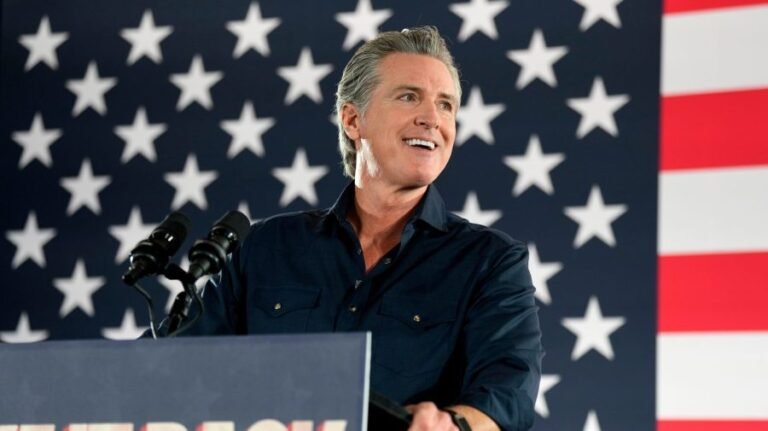
The U.S. General Services Administration is quietly considering selling the 1939 Wilbur J. Cohen Federal Building in Washington, D.C.
To most people, that might sound like an unremarkable bit of government housekeeping, but it is far more than that. The sale of this landmark would threaten one of the most important surviving monuments of the New Deal era and its extraordinary works of public art that still belong to every American.
The Cohen Building, originally built to house the Social Security Administration, stands as a testament to an era when the federal government recognized that democracy thrives not only on sound policy, but also on shared beauty and public purpose.
Its limestone facade combines stripped classical, art moderne and Egyptian revival elements — a design by Charles Z. Klauder that is unique among federal buildings. Inside, murals by Ben Shahn, Philip Guston and Seymour Fogel line the walls.
Painted directly onto the plaster in fragile fresco, they capture the spirit of the 1930s: the dignity of work, the hope of reform and the belief that public art could lift up an entire nation.
Because they are integral to the walls of the building, these murals are difficult to remove without destroying them. And if the building is sold to a private buyer, nothing would prevent their demolition or alteration. The art and the architecture — and the ideals they embody — could, like the White House’s East Wing, simply vanish overnight.
That’s not conjecture — it’s a pattern. Across the country, the sale or privatization of historic federal properties has too often led to the quiet erasure of our shared past. What is at stake here is not just one building, but the principle that public heritage is not for sale.
Over the last few weeks, the world has witnessed demolition at the White House without warning or respect for established processes. This exemplifies an “accelerated disposals” agenda, demonstrating that if demolition without recourse can happen somewhere so central to our national identity, it can happen anywhere.
The Cohen Building was added to the National Register of Historic Places in 2007, recognized both for its architectural distinction and its connection to the implementation of the Social Security Act. It is, quite literally, the home of Social Security — the program that still anchors the American social safety net.
Yet the General Services Administration has signaled that it plans to sell the building soon.
Once sold, the building would leave the federal inventory, public control — including preservation protections under the National Historic Preservation Act — would end unless they are negotiated as preservation covenants, conditions that are enforceable and carry the deed in perpetuity.
For this reason, under federal law, such a sale is explicitly recognized as an action that can have “adverse effects” on historic properties, triggering careful deliberation and consultation.
This is exactly why the National Historic Preservation Act requires a full, transparent review process before any undertaking, including sale, demolition or substantial rehabilitation can proceed.
The General Services Administration is legally required to consult with preservation authorities, local officials and the public — including interested organizations like The Living New Deal, which two of us represent.
There are far better alternatives than selling off a cultural treasure. A recent feasibility study outlined potential modernization for the Cohen Building, revitalizing the building as a state of the art, energy efficient federal workforce hub.
Alternately, other ideas that have been discussed include use as expanded legislative offices, or even as a new Smithsonian gallery. Each of these options would honor the building’s purpose and preserve its extraordinary artwork for future generations.
The federal government once understood the symbolic power of public architecture. During the New Deal, artists and architects were commissioned not merely to decorate, but to inspire — to remind citizens that their government was capable of building things of lasting beauty and meaning. In an era of deep political cynicism, that message is as urgent as ever.
We can’t afford to treat our shared heritage as disposable real estate. The Cohen Building is more than a relic of the past; it is a living embodiment of a time when public works and public welfare were intertwined — when America believed in investing in itself.
If we allow this building and its art to be sold to the highest bidder, we send a troubling signal about what we value today. The murals of Shahn, Guston and Fogel were made for everyone — not for private collectors, not for developers, but for the public. Protecting them means protecting a piece of our democratic soul.
Before another piece of our history disappears behind closed doors or is destroyed without any semblance of public recourse, the American people deserve a voice in its future. The Cohen Building belongs to us. Let’s make sure it stays that way.
Mary Okin is the assistant director and Dominique Bravo is an attorney and member of the board of directors of The Living New Deal Project. Daniel Leckie is an architectural historian and preservation planner with more than a decade of government experience who until recently worked for the General Services Administration as the dedicated historic preservation specialist assigned to the Cohen Building.


